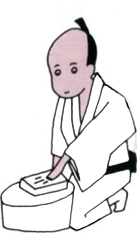The production of needles in Hiroshima was started more than 300 years ago when the Asano family of local lords expanded needle production as a form of manual piecework for lower-level warriors. Since that time, the producers made improvements including better quality and higher production efficiency, eventually becoming well known as a indigenous industry.
This industry started with iron sand taken from the Chugoku mountains that was turned into steel by the Tatara steel making method. This steel was then transported on the Ota River to present-day Hiroshima City where it was made into needles. Even now, Hiroshima remains the largest needle-making region in Japan, producing more than 90% of the hand-sewing needles, marking pins, and crochet hooks in the country.
Because this needle production area has been largely dependent on exports since the pre-war period, the high value of the yen has hurt the profitability of the business. In addition, the entire industry is facing a difficult environment, with growing needle production in emergent nations and decreasing demand within Japan. Making matters worse, the number of needle producers diminishes year by year, with too few people carrying on the tradition. Before the war, this region contained 200 needle companies. Shortly after the war, this number shrunk to 45, and now the number is only 11. 
Since its founding in 1948, Tulip Co., Ltd. has produced primarily hand-sewing needles, crochet hooks, and knitting needles. Our sewing sets for elementary school home economics classes are at the top of the industry, and the Tulip Brand crochet hooks have for many years been exported to more than 40 countries worldwide. In these and other ways, we have continually carried out technological innovations while operating on a base of our traditional technology.
